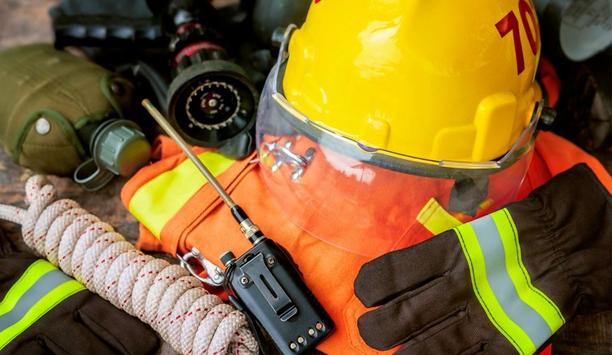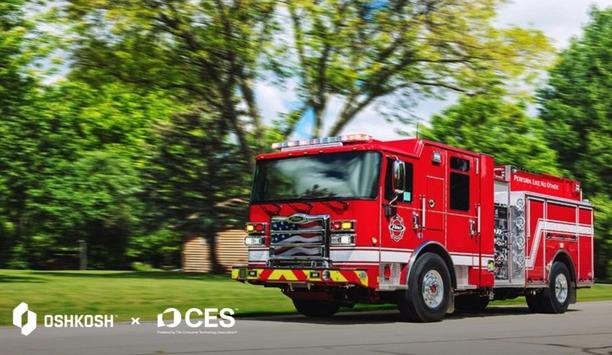One of the key reasons fireproofing in high-rise buildings is essential is because of the time it provides for evacuation and rescue operations. In the event of a fire, occupants on higher floors may have limited means of escape.
Fireproofing in high-rise buildings that use fireproofing materials and techniques can delay the spread of flames, allowing more time for people to evacuate safely and for emergency responders to reach the affected areas.
Challenge to fire services
As per the 2021 International Building Code, a high-rise building is any structure with an inhabited floor situated more than 75 ft above the lowest level of fire department vehicle access. Because of their elevation, fires in high-rise buildings pose a distinctive challenge to fire services for a variety of reasons.
Difficulties such as evacuating the building occupants, getting firefighters, medical personnel if necessary, and the required equipment to the fire floor, getting access to the fire for firefighting purposes, ventilating the building, and communicating with the fire command center make it difficult to handle high-rise building fires.
Fire-resistant structures
Most recently, the addition of an extra stairwell with specific elevators for emergency fire services
Fireproofing in high-rise buildings presents unique challenges. Unlike low-rise buildings, high-rise structures have limited evacuation options and are more susceptible to rapid fire spread.
Fireproofing in high-rise buildings plays a crucial role in protecting the lives of the occupants and preventing the loss of property.
The regulations being enforced demand that fire-resistant structures be set up to guarantee both structural safety and compartmentalization of a building, as well as the safe passage of egress, protection of any gaps in the fire-resistance construction, the application of interior finishing materials with low flame spread and smoke development, and, most recently, the addition of an extra stairwell with specific elevators for emergency fire services.
Active fire protection devices
According to the fire code, active fire protection devices must be in place, these include automatic sprinkler systems, standpipe systems, fire extinguishers, fire alarms, smoke control systems, smoke and heat vents, fire department connections, fire pumps with protection from service outages, as well as standby and emergency power sources.
Wood framing and sheathing that has been feted to make it fire-retardant is true in exterior walls
Type I and II buildings utilize noncombustible materials for most parts of their structure, though there are some cases where exceptions apply. Type III buildings are characterized by walls made of fire-resistant material and the interior components can be made of any material allowed by the code.
Wood framing and sheathing that has been treated to make it fire-retardant is permissible in exterior walls with a fire rating of two hours or less. Type IV construction involves the use of building elements such as mass timber or noncombustible materials that have a fire-resistance rating. Type V construction is one in which the materials used for structural components, external walls, and internal walls are allowed as per the code.
Fireproofing in high-rise buildings
The necessity to provide passive fireproofing in high-rise buildings became apparent after the tragedy of 9/11. Subsequently, the International Code Council’s Board of Directors formed an ad-hoc committee – the Terrorism Resistant Building (TRB) committee – to review and suggest revisions to the building code to reinforce the construction of buildings in order to make them more resistant to terrorist attacks.
It could be debatable whether the building code should be amended in this regard, nevertheless, the task group did create and propose tougher standards for high-rise edifices.
TRB’s suggestions
The TRB’s suggestions which were adopted in the 2009 International Building Code to regulate High-Rise Buildings (Section 403) included:
- An elevated demand for SFRM protection for structures more than 420 feet from a fire department vehicle access, plus more attention to inspection.
- A separation of close-by exit stairways.
- A necessity for impact resistance for key escape shafts for safety.
- An extra exit stairway for the evacuation of building occupants.
- An additional five service elevators for use by fire services during fires.
Code on Fire-Resistance Ratings of Structural Members
Aside from the regulations in Section 403 of the International Building Code, there are other criteria in the code that must be fulfilled for materials to be granted fire-resistant ratings, regardless of the height of the building. The section of the code on Fire-Resistance Ratings of Structural Members (704) has specific rules that must be followed when installing SFRM. These include:
- The implementation of the SFRM (Sprayed Fire-Resistive Material) must be in accordance with the list, taking into consideration but not limited to the least layer thickness and dry density of the material, the way of application, the state of the substrate surface, and the utilization of bonding adhesives, sealants, reinforcing or other components
- SFRM installation must comply with the manufacturer’s instructions.
- The substrate to receive the SFRM must be free of dirt, oil, grease, release agents, loose scale, and other conditions that prevent adhesion.
- When applied over primers, paint, or encapsulants other than those specified in the listing, the steel substrate shall meet certain dimensional requirements and minimum bond strength requirements.
- The temperature minimum during and after the SFRM application.
- The SFRM that has been dried shall not exhibit cracks, holes, delamination, or any exposure to the substrate.
- Chapter 25 of the IBC contains requirements for the use of gypsum board. According to the ASTMC 1396, “Standard Specification of Gypsum Board,” Type X gypsum board is frequently used in fire-resistance-rated construction.
Special inspections of SFRM
Special inspections of SFRM are acted in accordance with the detailed provisions contained within the section
In accordance with the provisions of Section 1705.15 of the IBC, special inspections of SFRM and IFRM are required during and after installation. Special inspections of SFRM are performed in accordance with the detailed provisions contained within the section. This section provides information on the surface preparation, temperature requirements in advance of and after application, and thickness, density, and bond strength measurements.
In accordance with AWCI 12-B ‘Standard Practice for the Testing and Inspection of Field Applied Thin-Film Intumescent Fire-Resistive Materials; An Annotated Guide’, special inspections of IFRM are required to be conducted in accordance with Section 1705.16. These items do not relate to the methods of application, but they are critical in ensuring the products are installed properly.
Fire rating requirements
Intumescent coatings, which are epoxy-based, paint-like mixtures, can be applied to a primed steel surface
Intumescent coatings, which are epoxy-based, paint-like mixtures, can be applied to a primed steel surface. When exposed to high temperatures, these coatings swell to many times their original size, forming an insulating layer that prevents the steel from succumbing to the heat.
These coatings can grant fire protection for up to four hours. Intumescent coatings are an effective way to maintain an architecturally pleasing structure while also meeting fire rating requirements. Unfortunately, intumescent coatings are costly, costing several times more than other spray-applied systems. The price of intumescent coatings increases with an increased fire rating.
Passive and active protection
These coatings are usually only used on exposed steel. It is common to have a combination of systems in one member, such as spray-applied fibrous systems on the hidden parts and intumescent coatings on the exposed parts.
The primary differences in fireproofing in high-rise buildings, as discussed in this article, relate to the additional passive and active protection required. The actual fireproofing is not significantly different than fireproofing other buildings, although the required rating periods are longer due to the inherent difficulties of evacuating and fighting high-rise building fires.















